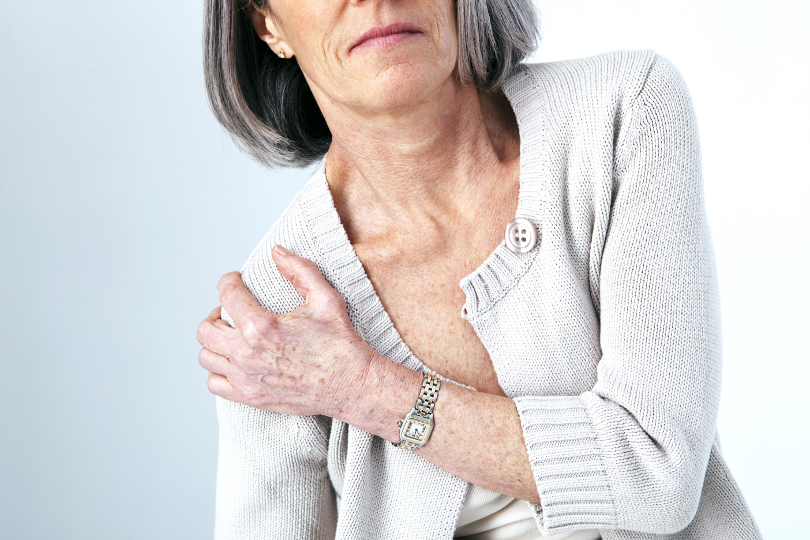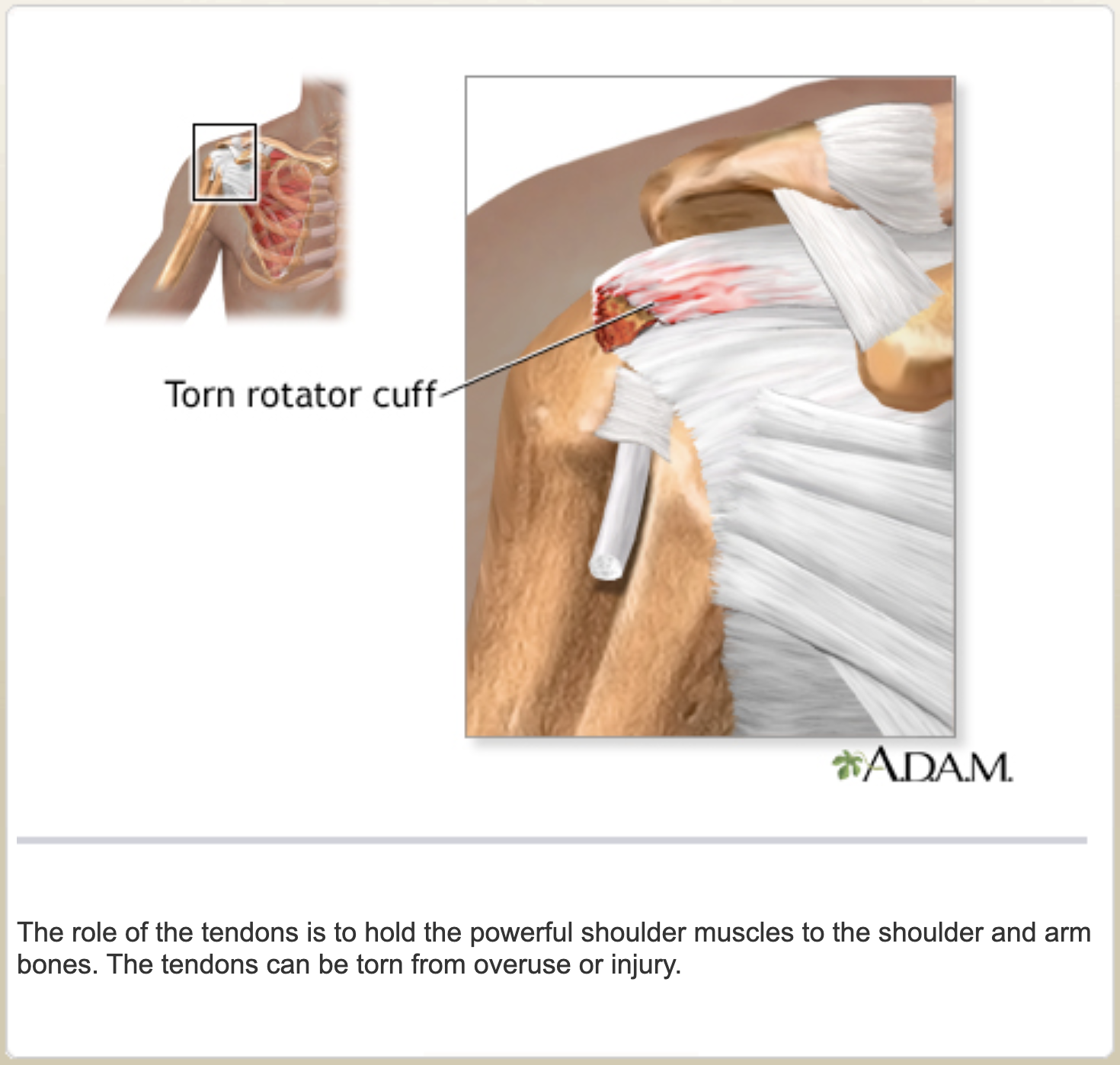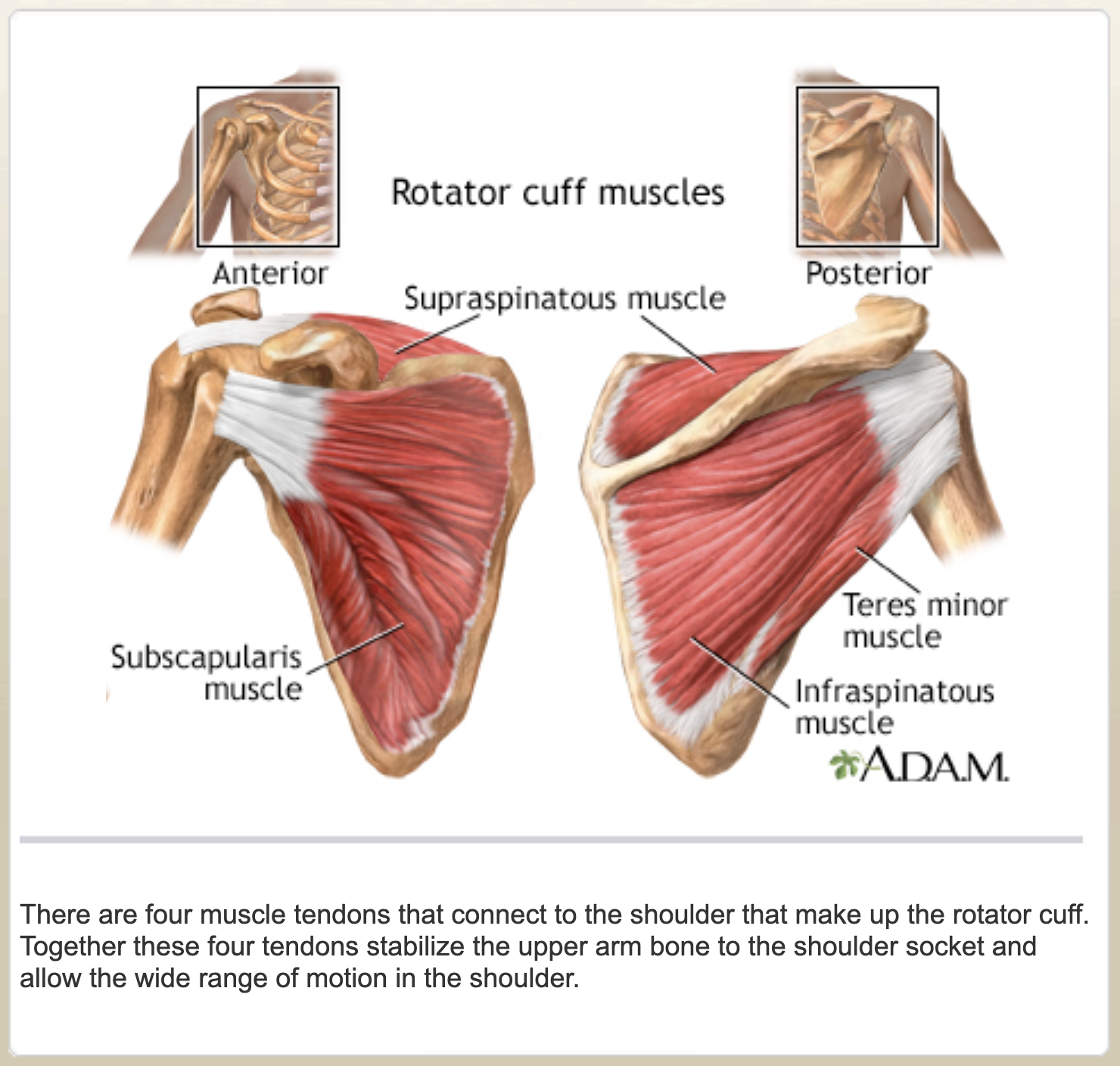About rotator cuff tears and anatomy

Rotator cuff tears can affect people of all ages, but are more common in the older population.
Rotator cuff tears can be caused by:
- Traumatic injury
- Repetitive shoulder motion
- Degeneration
The size and location of the rotator cuff tear can affect the severity of symptoms.
Symptoms include:
- Pain
- Night pain (difficulty sleeping)
- Inability to lift your arm
- Weakness
- Popping, clicking in your shoulder

Rotator cuff anatomy
The rotator cuff consists of four muscles and tendons in your shoulder; the supraspinatus, infraspinatus, subscapularis and teres minor. These muscles and tendons connect your upper arm bone (humerus) with your shoulder blade (scapula). The rotator cuff also helps to hold the upper arm bone in place in the shoulder socket (glenoid). The rotator cuff allows for a wide range of motion of your arm and shoulder.
